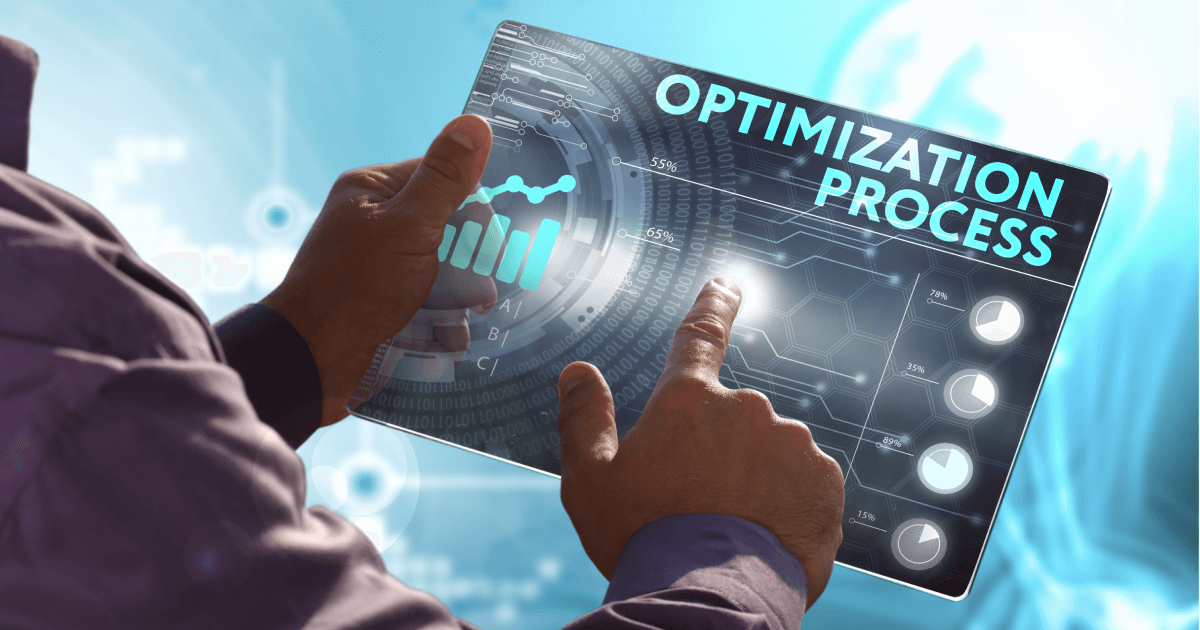Strategic foresight : Nice-to-have or necessary resilience measure?
Strategic foresight is the ability of an organization to create and maintain a coherent and functional forward view and to use the insights arising in organizationally useful ways. This holds good for Government, Businesses, and Startups alike across the world. Strategy requires the foresight to identify and respond to ripples on the horizon.
In light of the ongoing COVID-19 outbreak, we look at whether Strategic foresight or Corporate foresight is a necessity or a nice-to-have resilience measure in the working of an organization. Would it be possible for corporates to build strategic foresight in terms of processes, policies, or tools to detect adverse conditions, crisis handling, and risk mitigation? While no system can predict or cater to extreme crises, can certain initiatives within an organization help mitigate the risk, buy time or better prepare them? We also look at some of the initiatives by organizations which, in the current situation, mount a robust response that could help reduce possible disruption to their overall operations.
COVID-19 & its Impact
Coronaviruses (CoV) are a large family of viruses that cause illness ranging from the common cold to more severe diseases such as Middle East Respiratory Syndrome (MERSCoV) and Severe Acute Respiratory Syndrome (SARS-CoV). Coronavirus disease (COVID-19) is a new strain that was discovered in 2019 and has not been previously identified in humans. COVID-19 is sweeping every country worldwide at an alarming speed and is soon turning out to be a global pandemic. Despite intense research efforts, how, when and where new diseases appear are still a source of considerable uncertainty. World Health Organization (WHO) has been assessing this outbreak around the clock and is deeply concerned both by the alarming levels of spread and severity, and by the alarming levels of inaction.
We have seen how doctors & paramedics along with the entire support staff in hospitals and health centres are literally working on a war footing, despite being hard pressed with resources, tools and other necessary medical facilities. While the recent COVID-19 outbreak has impacted Travel, Hospitality, Manufacturing and other industries however, the maximum impact has been on Healthcare, especially doctors, paramedics and other frontline personnel in hospitals when it comes to the direct risk of infection but in general to the economic activities.
Hospitals are not optimized for patient flows with infectious disease. Traditionally Hospitals have been known as a source of infection. This gets amplified, when we have an endemic like COVID-19. To handle large scale population testing for symptoms, a
non-contact screening and new kind of patient flow designs might be the need of the hour.
Moreover, health systems are not designed for peak loads. In the case of COVID-19, for health systems one of the main constraints is going to be the ventilators. Governments like in UK are looking to step up the manufacturing of such devices. Also, NHS plans to cancel all non-essential surgeries to free up beds for handling COVID-19. It still might be the case that the constraint in treatment is not beds but the respiration assisting devices such as ventilators. Estonia responded by organizing a 48- hour hackathon for ideas on COVID-19 to which some 1000 people participated and one of the team came up with a DIY breathing assistance device.
Strategic Foresight is all about futureoriented insights, it should always be considered a key concept of any strategic planning endeavour. Strategic foresight & Planning initiatives by organizations in the light of COVID-19 have built several different capabilities which in totality makes them better equipped to handle the short to medium term crises. We look at some of the initiatives below
Adopting Digital technologies is not an option anymore!
Strategic foresight could also be employed in building technology and tools to better predict and monitor future complexities. For example, in the case of COVID-19, can tools like Artificial Intelligence, Machine Learning & Big Data and Analytics play a role in process augmentation and better understanding of the risks, given that a lot of data is available from WHO, UN and other organizations which are collecting data and almost updating in real time for public consumption.
Can hospitals use this to build the necessary capabilities and processes to build predictive capabilities to handle sudden inflow of patients? While it is known that a given hospital can only accommodate certain number of patients and is not possible for them to take more than their capacity, more so during emergencies, clearly suggests that it is important for the healthcare ecosystem to build certain additional capabilities in terms of access to more doctors paramedics tools funds space and other things which are needed for them to cater to the additional traffic. In Italy, for example a startup has launched an AI chatbot for COVID-19 given the helpline numbers are running busy and citizens have many more queries than the system can handle.
Social distancing is a major recommendation to slow down the infection spread. Behavior change has been a key issue in adoption of digital productivity tools. With remote work as the only option many enterprises would be open for behavior change. How can Enterprises create necessary channels and processes which include communicating with employees, partners as well as customers in a way that business continuity and growth is always taken into account.
Here the big potential is in enterprise communications tools like Slack for group chats and crowdsourcing responses within the team. Virtual classrooms for important debriefing and sharing updates, insights and plans. AI based screening tools and chatbots to reduce the burden on health systems. Wearing masks or protective gear is another example.

De-Escalation and Containment Strategies
Strategic foresight can be a saviour during crisis and recession. How do Enterprises foresee possible distractions from business-as-usual and have contingencies in place to make sure the business is continuous and withstands any potential destruction because of situations beyond control like the one we are seeing with COVID-19? Implementing best practices and learnings from industry peers and others, adhering to WHO and local government welfare and advice can go a long way in better crisis management.
Another strategic foresight which organizations can adopt through their policies can help in helping “Flattening the curve” as has been popularly called which means that all the social distancing measures is more about slowing down the rate at which people fall sick than to preventing illness. Even if the employees are healthy, they could help slow down the epidemic by following actions such as hand washing, travel restriction, and social distancing, all aimed at Flattening the curve. Larger objective is to reduce the health care capacity to become quickly overwhelmed and not get to a situation where the doctors have to engage in a triage i.e. choose who gets the hospital level care and who does not.
Crisis management team driven with Empathy
Organizations adopting People first based welfare approach have a higher chance of surviving a crisis and support of their employees. Well-being of vendors, employees, their families is very important. Have cross functional teams to respond to new situations. Having diverse stakeholders broadens the horizon and helps take multiple viewpoints and situations into account. Create empathy amongst employees and other stakeholders in that we are all part of it and we will deal with it together. After all, such black swan events like COVID-19 which threaten the very fundamentals of human life, can bring unity and togetherness across the spectrum as it could impact anyone and as things stand today, no one is immune to it.

Periodic Vulnerabilities Analysis
Doing period simulations internally of such possible black swan moments can help significantly. This will help the organizations improve the crisis management capabilities. Given the ever-growing complexities in which organizations live and compete, having a risk management strategy in place is a necessity. It is also safe to assume that these black swan events can be recurring and the strategic planning on tackling such events needs to be baked well within an organization’s strategy.
Conclusion: Strategic foresight as a resiliency measure
Strategy for any organization needs the foresight to respond to ripples in the horizon for smooth functioning, more so in the ever-growing complex business environments. Organizations that attempt to move into turbulent times, such as the one with COVID-19 outbreak, without a strategic foresight, will find themselves overwhelmed
by forces that were indeed visible for some time, but which were overlooked. While no futures method can foresee all eventualities, organizations that routinely employ Strategic Foresight, will find that they are better equipped to negotiate the turbulent conditions than the ones that don’t. Strategic foresight, while is seen as a competitive advantage in general, but during challenging times can really be a saviour.
As we’ve seen in the case of the COVID-19 outbreak, having strategic foresight and planning, the epidemic impact on their activities could be reduced to a large extent. Initiatives like using digital technologies as part of the corporate strategy, de-escalation and containment strategies, Empathy based crisis management, periodic vulnerabilities analysis of unforeseen circumstances can better prepare the organizations and be resilient. We conclude that employing Strategic foresight and planning, by design, can give organizations strategic agility and a higher degree of responsiveness and preparedness.
Haritash J. Tamvada is the Founder of Elmarqr.com – an Asset Intelligence and Traceability software automating Asset Tracking, Audit & Maintenance for Enterprises. With 12+ years of global Entrepreneurial and Executive experience, he is passionate about Mobile, Digital Technologies and Internet business. He is interested in research around Strategy, Entrepreneurship and Innovation
Composed by Haritash J. Tamvada and Sachin Gaur

